- Home
- Content Library
Content Library

Do you know what it takes to start a dental practice?
Any dentist who has started a practice will tell you: There’s a lot of hard work between the initial vision and opening the doors. Knowing the ins and outs of the process can save you considerable stress along the way — and position your practice for a successful future. If you’re thinking about starting your own practice, A-dec is offering a seminar you won’t want to miss. The Foundations Seminar: Starting a Dental Practice is designed to give general dentists and specialists the essential tools for building a dream office. The seminar is coming to Orlando on April 25-26, and Los Angeles on July 25-26. Here’s a preview of
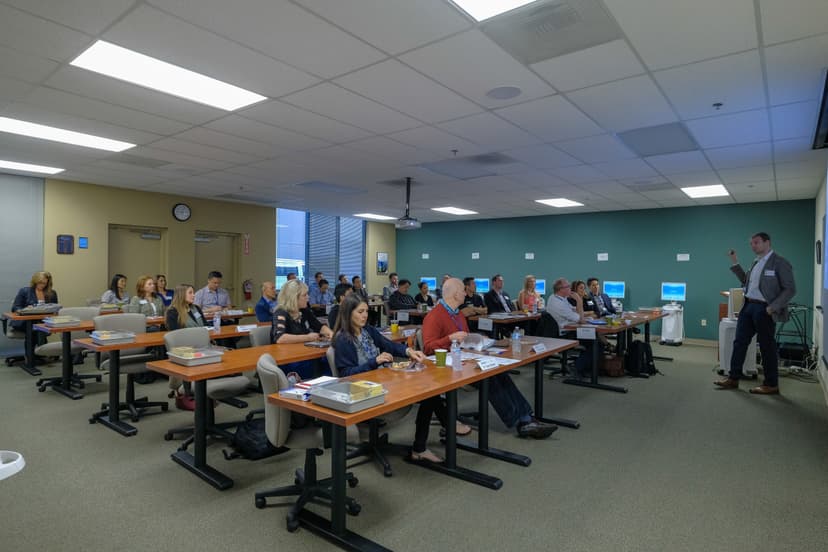
Experience the Future of Dentistry in Just Two Days
By: Kirstie Savinski, Marketing Manager - Dental Events, Henry Schein Dental -------------------------------------------------------------------------------- Curious about what the CEREC® system can do for your patients and your practice? Learn first-hand, at any one of several Exceed with CEREC events hosted at various locations across the country throughout 2019, sponsored by Dentsply Sirona and Henry Schein Dental. During the interactive two-day session, you will take a deep dive into the world of CAD/CAM dentistry and learn about digital imaging and fabrication of single-visit restorations. It’s all about how to provide better, safer, and more convenient patient care, and boosting your skill set using CEREC technology. WHAT IS CEREC, ANYWAY? In the world of CAD/CAM dentistry,

Creating the Ultimate Dental Office
By: Kirstie Savinski, Marketing Manager - Dental Events, Henry Schein Dental -------------------------------------------------------------------------------- Where do you see yourself and your dental practice next year? In five years? Ten? If you’re wondering how to grow your business and keep up with rapidly changing technology to satisfy patient needs, the Dentsply Sirona TRENDS Event, sponsored by Henry Schein Dental and Dentsply Sirona, is the event you’ve been waiting for! This exclusive two-day session is offered in three different locations across the U.S.: * Boca Raton, FL (Aug. 16 - 17) -- sign up Each TRENDS event hosts interactive presentations, real-life case studies, and innovative product insights, providing all the tools you need to

Adhesion of resin cement to dentin: effects of adhesive promoters, immediate dentin sealing strategies, and surface conditioning
Spring 2019 | Carline RG van den Breemer, Mutlu Özcan, Margot RE Pols, Anique R Postema, Marco S Cune, Marco MM Gresnigt This study evaluated the shear bond strength (sBs) of resin cement to dentin after applying two adhesive (a) systems with a combination of four different immediate dentin sealing (iDs) strategies, and two surface conditioning (sC) methods. Download the full article

Improve Practice Performance with Optimal Office Design
By: Kirstie Savinski, Marketing Manager - Dental Events, Henry Schein Dental -------------------------------------------------------------------------------- What if I told you there was a potential 38% return on investment for dentists who update their offices – through redesign or new construction – after the first full year and an additional 38% the following year, if they do it right? That is a realistic average ROI for those dentists who worked with renowned office-design expert Dr. Mark Tholen, DDS, MBA, and past CEO of one of the country’s leading dental office design firms. Now you can join Dr. Tholen as he takes you through various design ideas you should consider for enhanced efficiency and

10 Tips for (practically) Stress-Free Operatory Planning
This is it. The moment you’ve dreamed about… opening your own practice! Whether you’re starting from scratch or upgrading an existing office, it’s important to have clear objectives from the start. Consider what you want to achieve: from workflow layout and efficiency to materials, colors, and equipment. The clearer your objectives are up front, the better your operatory planning will be executed. Now take a deep breath, because this is the fun stuff! 1. FIND YOUR INSPIRATION. Take a look at Pinterest for ideas. You can spark your imagination with thousands of practice design images from around the world, many of which link to helpful articles on the topic.

See More. Treat More. 3D Imaging: Orthodontists
Traditionally dominated by 2D digital pans and cephs, orthodontists have gradually been migrating their imaging technology to 3D cone beams. MORE DETAIL = MORE CONFIDENCE Dr. James Paschal is an orthodontist who upgraded his digital panoramic and ceph unit to a cone beam unit four years ago and just recently purchased a second cone beam unit for his satellite office. His 3D imaging technology now gives him “10,000 times” more information at virtually the same radiation levels as a digital pan. “It was always my goal to have a 3D view of my patients,” said Dr. Paschal, “but I waited until my practice matured and the price point made

See More. Treat More. 3D Imaging: Periodontists
Dental practices often purchase cone beam 3D imaging for a specific application. However, once doctors start using a cone beam, they discover it’s a jack-of-all-trades piece of equipment that’s more versatile and valuable than they thought. A cone beam reveals issues in the oral cavity that would otherwise go unnoticed, elevating the effectiveness of pre-treatment planning for more predictable outcomes. In the field of periodontics, Periodontists diagnose and treat their patient’s teeth, supporting structure, and gums. The cone beam allows early diagnosis of issues around the tooth and its supporting bone and ligament structures that are not always seen by traditional 2D X-rays. Being able to diagnose these problems early

See More. Treat More. 3D Imaging: Oral Surgeons
Before a single incision is made, many oral surgeons rely on a cone beam 3D imaging system to provide them with detail about the case. With a single rotation, 150-200 images are taken and then put together into a three-dimensional rendering with sophisticated, predictive software. CBCT imaging is used most widely in oral surgery. It contributes valuable information applicable to many procedures done in the office. With the insight it provides, oral surgeons can evaluate and pre-plan extractions, particularly of third molars; confirm measurements and proximity to other anatomical structures located close to the surgical site; and determine the quality and quantity of bone available for implant surgery. In

See More. Treat More. 3D Imaging: Endodontics
Imagine walking down a dark pathway at night. You turn on a flashlight and suddenly you are alerted to things you couldn’t see before that could trip you up…tree roots, uneven ground, winding turns. That’s what a 3D cone beam imaging system does inside a patient’s mouth - it takes comprehensive, highly precise images that highlight the oral cavity and surrounding anatomy in ways that traditional 2D X-rays, the standard of care, simply cannot. Dr. Daniel Butterman is a general dentist in Arizona who invested in cone beam technology for one reason…to gain more confidence in diagnosis and implant treatment planning. However, he found that it was not

3D Imaging Systems Elevate Patient Care in General Dentistry Practices
If you are a general practitioner who sees patients with cavities, you can benefit from a 3D cone beam imaging system. If you do root canals, a cone beam could be your best friend. If you routinely handle implants or complex extractions, 3D images are a game changer. In other words, 3D CBCT imaging technology is for every dentist, including those in general dentistry practices. The technology is powerful and precise, but that’s exactly why family dentists often hold up their hands and say, “I’m not a specialist or doing complex cases. It’s more than I need.” Dr. Daniel Butterman of Butterman Dental in Centennial, Colorado fully disagrees. He

Review of cone beam computed tomography guidelines in North America
February 2019 | Irene H. Kim, Steven R. Singer, Mel Mupparapu The aim of this article is to investigate, study, and summarize cone beam computed tomography (CBCT)-related guidelines offered by relevant organizations and associations within North America to provide the dental practitioner a clearer direction on the practice of CBCT-related procedures in North America. Download the full article

Learn How 3D CBCT Systems Add More Dentistry to your Practice
There’s a lot of buzz surrounding 3D dentistry. It’s no longer the future; it’s standard practice. The digital dentistry workflow is revolutionizing the dental office and 3D dental imaging is a major component. 3D CBCT systems can provide you, the dentist, with the clearer images you need to diagnose better; demonstrate to patients the need for treatment; and gain greater patient acceptance. THE WORLD IS NOT FLAT When asked about incorporating 3D cone beam imaging into their practice, many dentists respond that they are satisfied with 2D imaging. The problem with a 2D view is not so much what it shows, but what it doesn’t show. The extent of lesions,

Does Your Dental Stool Have Your Back?
If you’ve ever suffered from back pain, you know that it can affect your mood, sleep, work, and overall quality of life. What you may not know is that the design of your dental stool can have a direct impact on how your back feels at the end of each working day. Hours spent twisting and leaning over patients to get the best possible view of the oral cavity can lead to strain, fatigue and pain over time. This is why the majority of dental health professionals have reported at least one musculoskeletal disorder (MSD) during the past year, with up to 60-percent of dentists reporting lower back

Building or Remodeling a Dental Practice?
FIVE QUESTIONS TO ASK BEFORE CONSTRUCTION BEGINS Even though GPS has taken over and made maps virtually obsolete, the idea of carving out a route to a destination is important. Designing and building your dream dental practice should follow that same process. Asking the right questions and plotting a course before you begin ultimately saves time, eliminates mistakes, and enables you to achieve your dream dental office. Henry Schein Equipment Sales Specialist Ben Oliver has walked many doctors through a thoughtful, methodical process. This Henry Schein exclusive process asks doctors some key questions that impact how they move forward with a new practice design and build. QUESTION #1: DO YOU KNOW

The Right Dental Chair Can Move Your Practice Forward
Imagine for a moment that you drive a car that’s at least ten years old. It might be dented, slow, unreliable, and in need of a new paint job. It would probably be able to get you from point A to point B, but for how long—and how efficiently? What would the repair costs be if it broke down? When you think about it, an old dental chair is not so different. You may be getting by with it at the moment, but what are the hidden costs you aren’t considering? An uncomfortable, unreliable, or unattractive dental chair can hinder your workflow, lower patients’ opinions of your
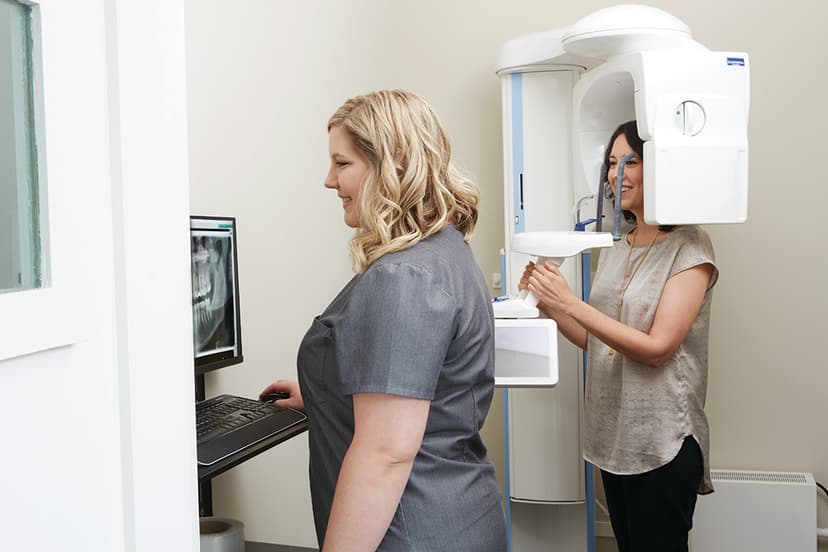
Five Reasons to Incorporate 3D Imaging in your Dental Practice
3D dental imaging is rapidly becoming the standard of care in all of dentistry, not just specialty fields. If you are a doctor who looks at the precision of this equipment and thinks it’s “overkill” for the patients you see, it may be time to rethink that assumption. Our world incorporates digital experiences more deeply into everyday life, and your patients expect it to be part of their care. Most dental practices can grow beyond what they expect by investing in 3D imaging. Let’s review five reasons why 3D imaging might be right for your practice. MORE ACCURATE DIAGNOSTICS A cone beam CT captures digital images of teeth, soft and hard
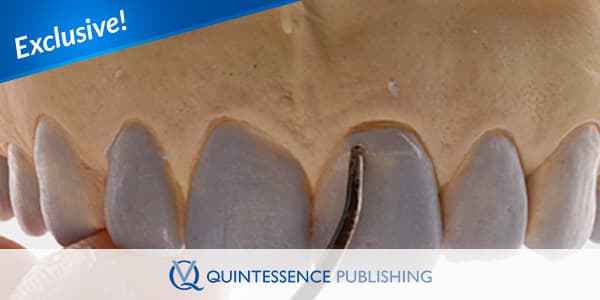
A patient-calibrated individual wax-up as an essential tool for planning and creating a patient-oriented treatment concept for pathological tooth wear
Winter 2018 | Reza Saeidi Pour, Madalena Lucia Pinheiro Dias Engler, Daniel Edelhoff, Otto Prandtner, Stefan Frei, Anja Liebermann Tooth wear is generally a physiological process; however, it can also be a pathological condition associated with attrition, abrasion, and erosion processes in which the quantity of tooth loss is atypical for the patient’s age. Download the full article
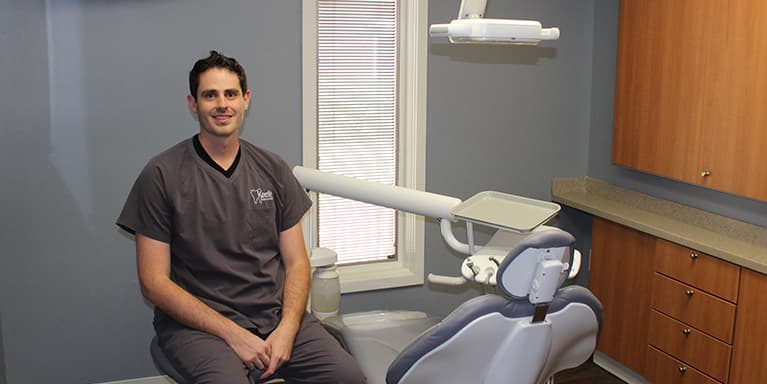
A Diamond in the Rough
As a chemical engineering student at Ohio State University, Dr. Richard Keefe was leaning toward medical school. While working his job at a local gym, an astute customer suggested that dental school might be a better fit. Once Dr. Keefe realized that dentistry is engineering in the oral cavity and each case is a little project, he was captivated. After weighing all options, Dr. Keefe chose a residency program. In 2013, Dr. Keefe graduated from dental school and began looking for a practice to purchase. He was in search of an existing practice with a skilled practitioner and a solid patient base. What he found was a diamond
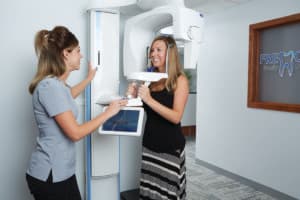
3D Imaging: Is it for Every Dental Practice?
The advances in digital imaging are creating a rapidly moving technology wave benefiting both patients and doctors. 3D imaging is part of this evolution, carving its own important place in oral health care. And it’s not limited only to specialty offices. General dentistry practices are finding the addition of 3D cone beam to their workflow has expanded the type and the level of care they can offer to their patients. 3D is more multi-functional than they ever expected. EXPANDED PATIENT CARE SERVICES The power of the CBCT is that it can illuminate more areas of the patient’s oral cavity, bringing to light areas not easily seen with traditional
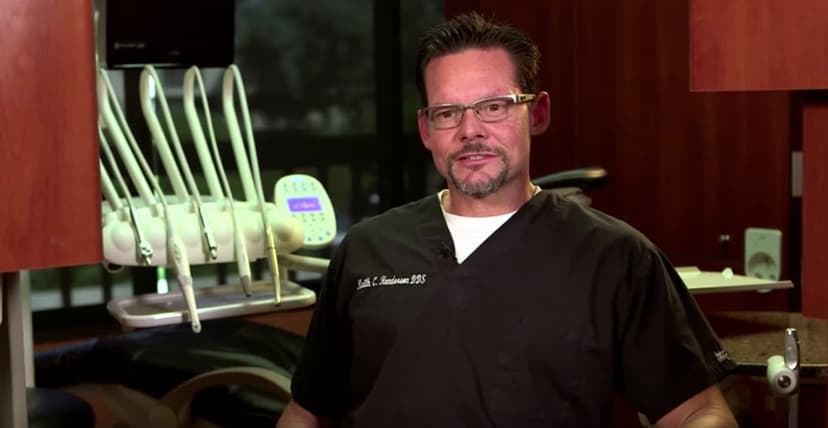
Good Ergonomics Saved His Back—and His Practice
As Dr. Keith Henderson will attest, the practice of dentistry doesn’t lend itself to good posture. From the time he was a dental student, he was feeling the aches and pains in his neck, shoulder, and back. After only a few years in his own practice, the pain and strain were starting to have a detrimental impact on his life outside of the office. Musculoskeletal disorders are the leading cause of early retirement among dentists—and Dr. Henderson was seriously considering a career change, even though he loved dentistry. Fortunately, he found a solution that literally saved his career (not to mention his back!). Hear Dr. Henderson’s story in this

Versatility in the Palm of Your Hands
As general dentists, our days in the office can get pretty hectic. From standard restorations to endodontics, implants, and the occasional emergency, I often find myself hustling from one operatory to another. It can be a challenge to juggle it all. That’s why I’m always looking for ways to streamline my daily activities. If I can make life easier, faster, and more comfortable for my patient, I’m all for it. One product that has really helped is the KaVo™ NOMAD Pro 2™ portable X-ray. To be fair, my wall-mounted unit was working just fine. The images are crisp and clear. But ask any patient, and they’ll tell you

Preparing for Your New Associate
From years of experience, the following are a few suggestions to consider when adding a new associate to your practice. WHY HIRE A DENTAL ASSOCIATE? As the senior dentist or practice owner, you may consider hiring an associate dentist if the practice has too many patients to treat or you are booked out for a substantial amount of time. Perhaps you want to reduce your treatment hours per week, allowing more time to spend growing the practice or possibly taking time away from the practice. An additional practitioner may increase revenue, profits, and value to the practice by treating more patients. A benefit of adding an associate is more

Why I Chose to Adopt 3D Imaging
Cone-beam computed tomography (CBCT) wasn’t for me—it was for the “big dogs,” the oral surgeons, those doing All-on-X cases. I was a general practitioner in a small, 1100-square-foot office. I had four operatories total, and 70% of my patients had preferred-provider-organization insurance. Back then, I was in Scottsdale, Arizona, at the Spear® center for training in CEREC®. Walking around the facility, I would often see the Galileos® Implant software on display: a rotating 3-dimensional (3D) image of the skull, inferior alveolar nerve mapping, implant planning, and more—impressive, but as I stated, not for me. Besides, I wasn’t placing implants at the time. When I spoke with referring surgeons who